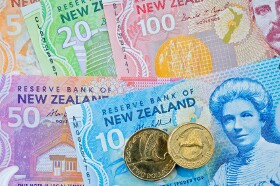The New Zealand ended the week with huge losses, mostly due the unexpected decision of the Reserve Bank of New Zealand to perform monetary easing on Thursday. The currency reached the lowest level since February against the Japanese yen and the lowest in five years versus the US dollar.
The RBNZ announced on Thursday that it is going to cut the main interest rate by 25 basis points to 3.25 percent. While a cut itself was not unexpected, most market participants had not anticipated it to happen so soon. RBNZ Governor Graeme Wheeler cited following reasoning for the reduction of the Official Cash Rate (OCR):
A reduction in the OCR is appropriate given low inflationary pressures and the expected weakening in demand, and to ensure that medium term inflation converges towards the middle of the target range.
Furthermore, he hinted that additional rate cuts are probable:
We expect further easing may be appropriate. This will depend on the emerging data.
As for the strength of the currency, Wheeler thought that the NZ dollar is still overvalued:
With the fall in commodity prices and the expected weakening in demand, the exchange rate has declined from its recent peak in April, but remains overvalued. A further significant downward adjustment is justified.
All in all, the statement sent a dovish message to markets, leading to a huge slump of the kiwi.
NZD/USD dropped from 0.7009 to 0.6983 on Friday, reaching 0.6941 intraday — the weakest rate since July 2010. NZD/JPY declined from 86.50 to 86.15, and its daily minimum of 85.88 was the lowest since February 4.
If you have any questions, comments or opinions regarding the New Zealand Dollar,
feel free to post them using the commentary form below.
